
This post is a kind of hodge podge of things I saw last summer when I was taking a break from blogging and things I’ve seen recently. If there is any continuity at all, any thread that runs through it, it is I hope how the beauty of this world can be found everywhere you look. The photo you see above happened just last week as I was going into a store to do some grocery shopping. I wasn’t surprised to see many people just walking right by without seeing it. We live in a paradise that is absolutely filled with beauty all the time, night and day, and we should give ourselves time to at least notice it. How long does it take to appreciate the beauty of the frost crystals on your car windows before starting the car in the morning, or to simply look up at the sky now and then?
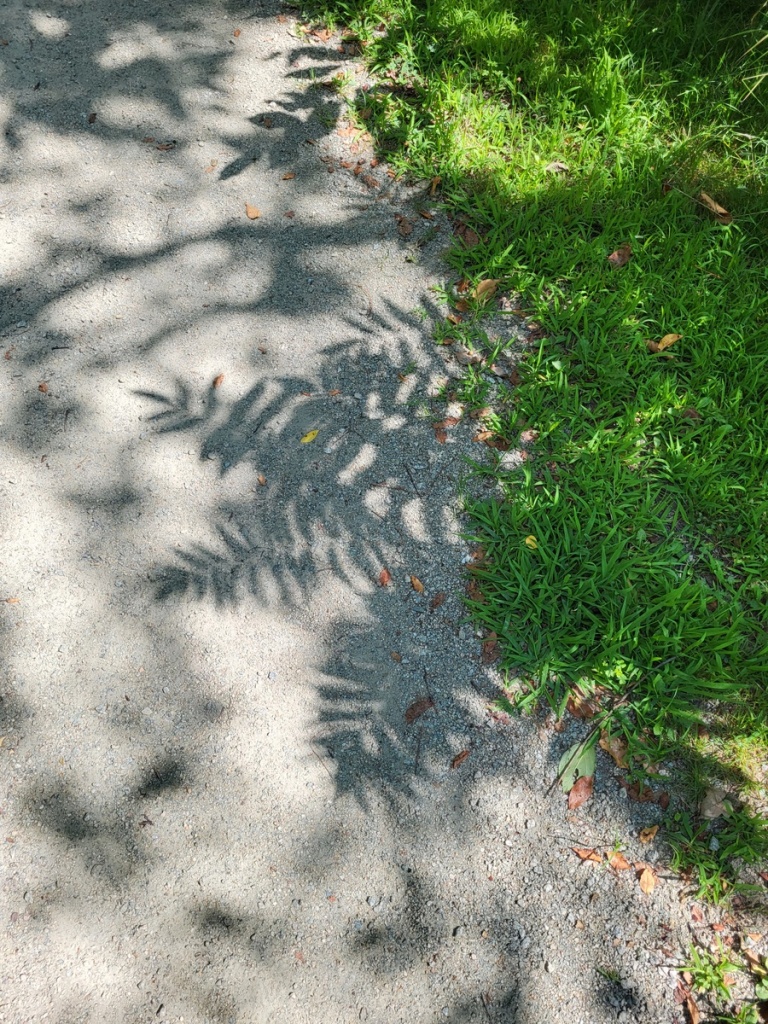
This shadow of a staghorn sumac reminded me of the palm trees I saw when I lived in Florida. The first time I crossed over from Georgia into Jacksonville, Florida it was about two in the morning, and the palm trees that lined the center of the divided road, lit up as they were by streetlights, seemed like the most beautiful thing I had ever seen. I felt as if I were driving into a postcard. I felt electric, and more alive than I had ever been.
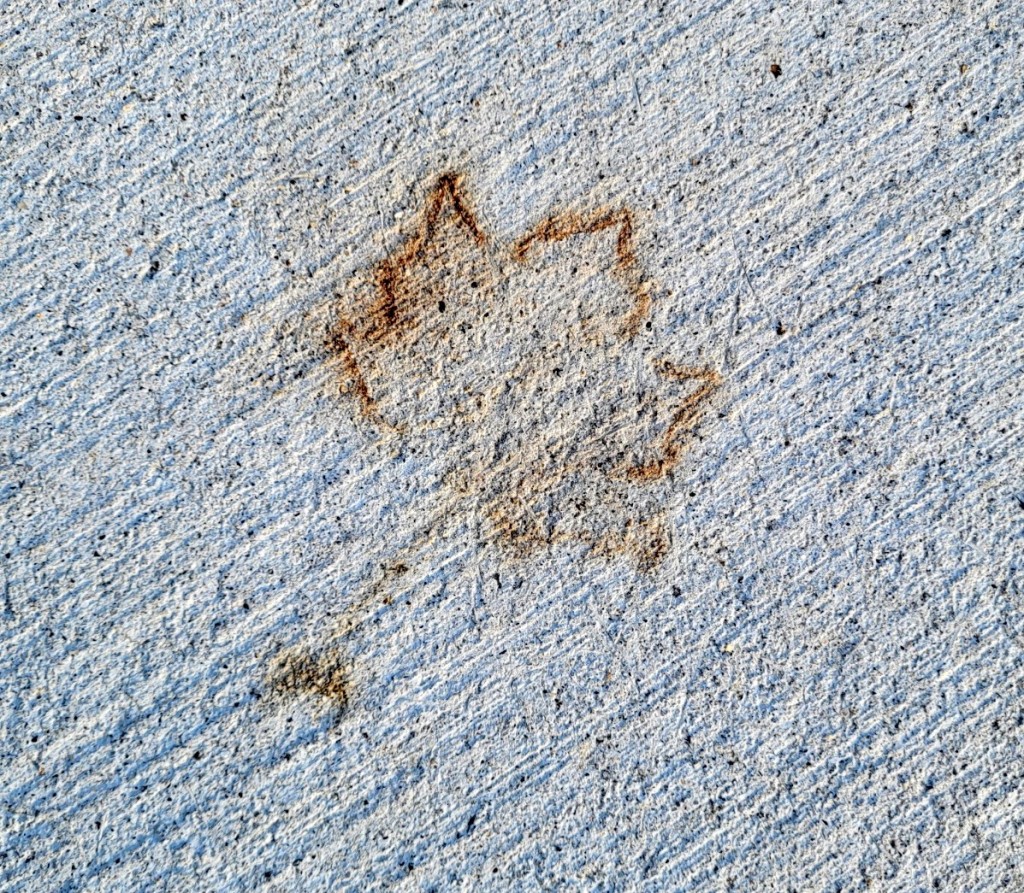
Here is another kind of shadow. The town put in a new sidewalk last summer and last fall of course the falling leaves landed on it. This leaf, from a maple, leached out its tannins and left its silhouette on the newly poured concrete. Maple leaves are one of the species used for botanical or “eco-printing,” which is where leaf and bark shapes and colors are transferred or bled onto fabric or paper.

When the town put in the new sidewalk they tore up lawns all up and down the street, so to finish the job they brought soil in from somewhere, and what you see above is what sprouted from that soil on the corner of the street; a forest of what are commonly known as weeds, like lamb’s quarters.
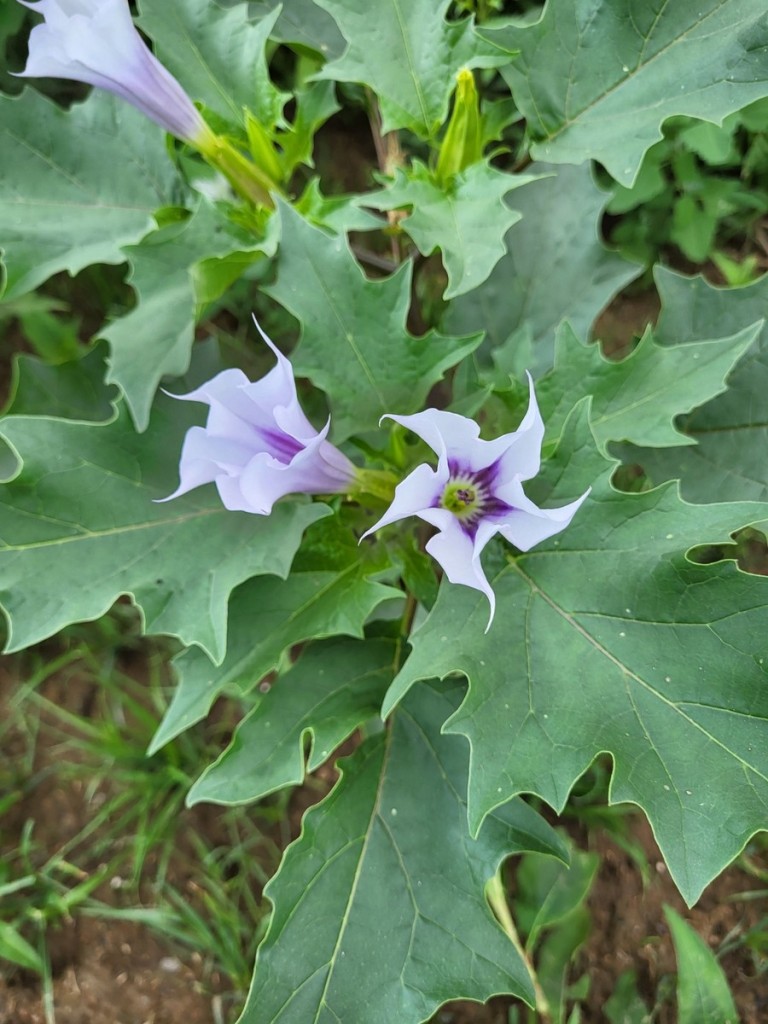
One of the plants that sprouted from the soil that was brought in was jimson weed. When I first saw it its big, beautiful white and purple flowers were just about to open. Jimson weed is considered poisonous to both humans and livestock so I was surprised to see it growing here, on the lawn of a children’s daycare center. This hallucinogenic plant in the nightshade family is also called loco weed and was used by Native Americans on spiritual quests. The original common name was “Jamestown weed” which was given to it after English soldiers in the Jamestown colony began to behave oddly after eating leaves of the plant. It is said that they “behaved like animals for several days.” This plant is considered exceedingly dangerous due to poisonings and deaths by people trying to get high. I was going to say something about it but the daycare wasn’t due to open until school started, so there was nobody to say anything to.
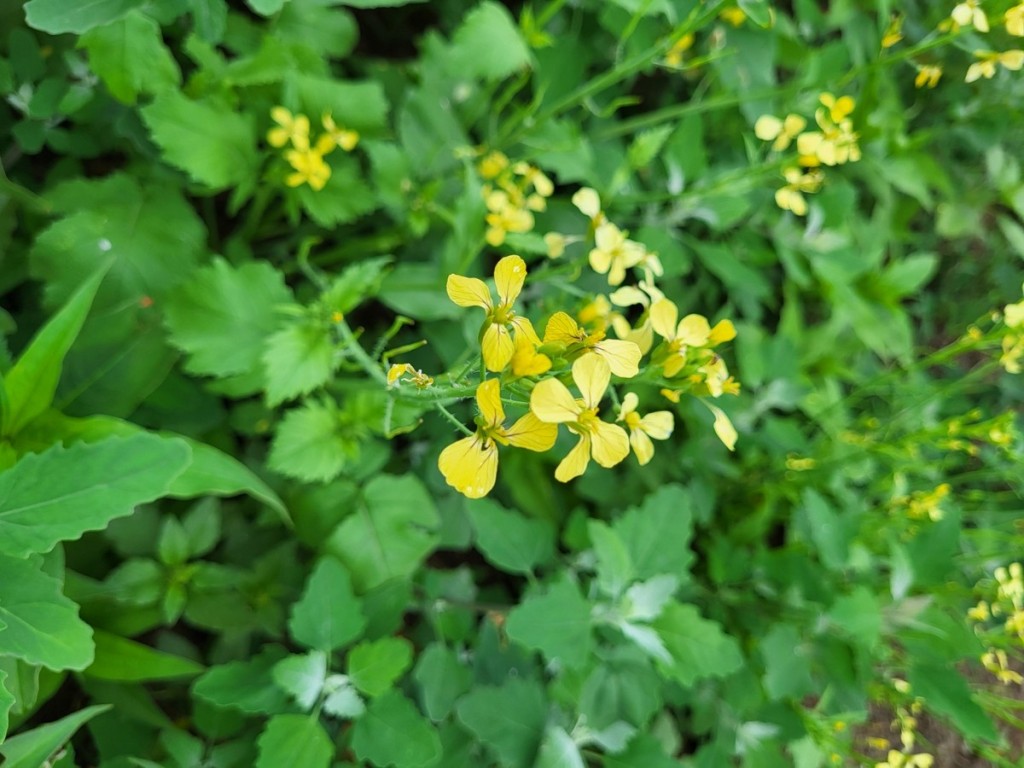
Another plant that grew from the foreign soil was wild mustard, which I never used to see much but now see fairly regularly. Because of the plants that grew from it I have a feeling that this soil must have come from old pasture land. There is old pasture south of here and I’ve seen these same plants growing there. In any event, I went back a few days later to see the beautiful Datura flowers and everything had been mowed down to something resembling lawn. I was a bit disappointed because Datura blossoms are very beautiful.
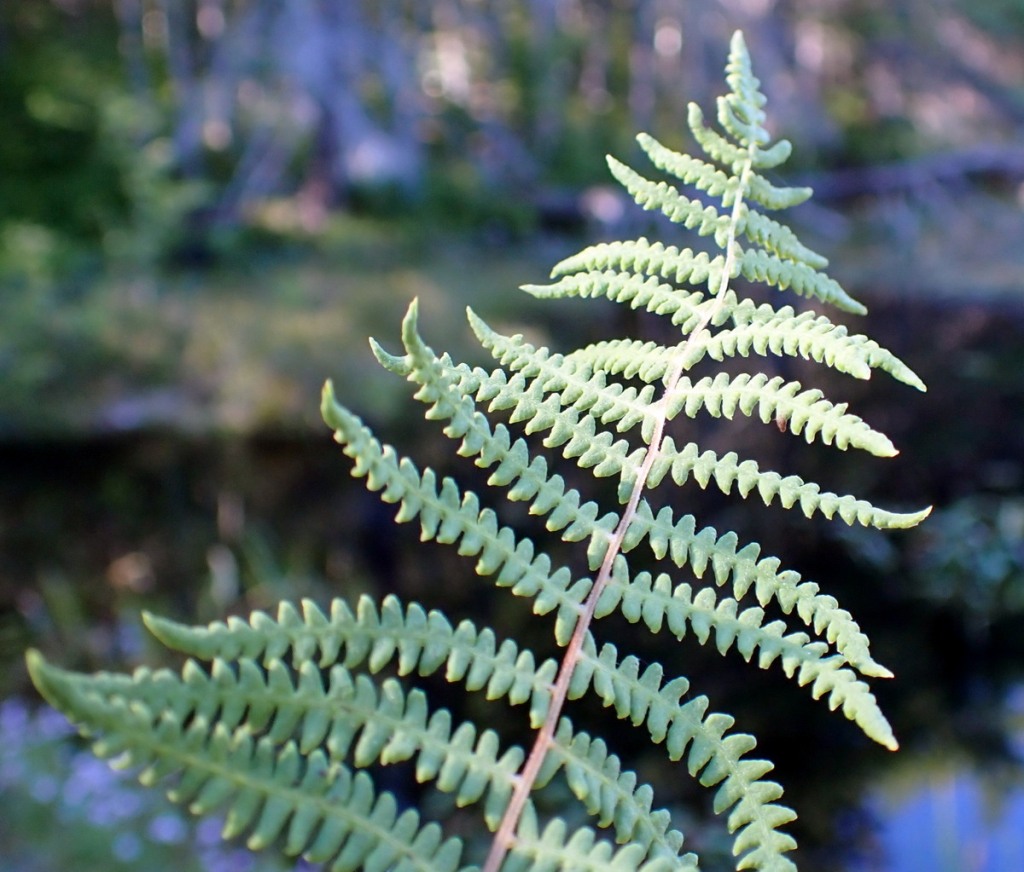
I went to a pond that I had been to a hundred times last summer and found this small, foot tall fern that I had never seen growing in the water right at the shoreline. The rounded over edges of the sub-leaflets didn’t look familiar but they, along with the way the leaflets twisted along the stem helped identify it.

I turned one of the fronds over and saw something I had never seen. The curled over edges of the sub-leaflets formed cups filled with what looked like blackberry jelly, but of course these were the fern’s spore cases (sori) and there must have been many hundreds of them. With all the hints it gave me it was easy to identify it as the marsh fern (Thelypteris palustris pubescens.) It has fertile and sterile leaves but the fertile ones tend to be smaller, according to what I’ve read. It likes wet feet and full sun. This isn’t a very good shot of the spore cases so I hope to return this coming summer and try again.
According to the book Identifying Ferns the Easy Way, A Pocket Guide to Common Ferns of the Northeast, by Lynn Levine, the caterpillars of the marsh fern moth feed on the leaves of this fern and it is the only known host plant of what is an uncommon moth.
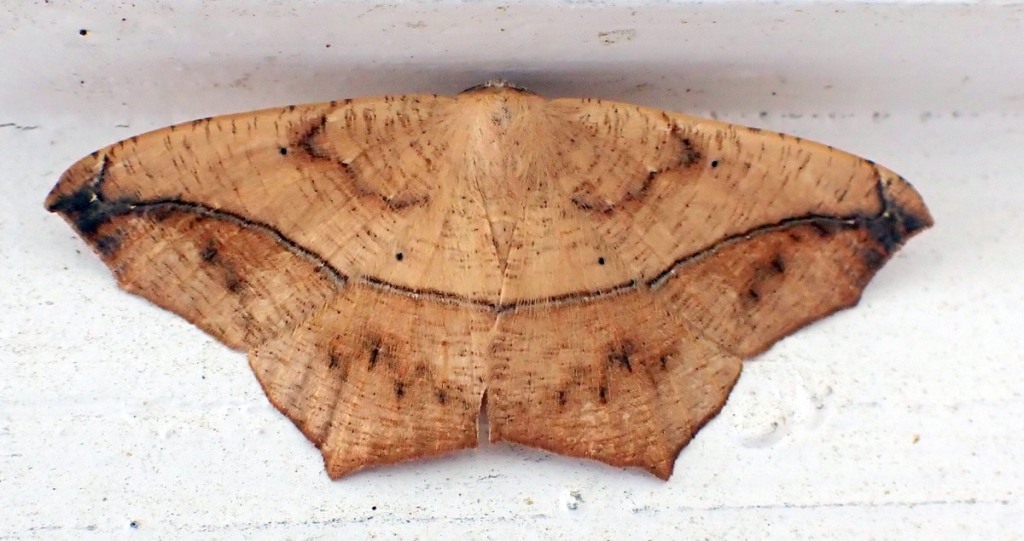
And speaking of uncommon moths, here is a large maple spanworm moth (Prochoerodes linolea.) I found it relaxing on the siding of the local post office and was amazed by its resemblance to tree bark. I’d guess that I’ve probably walked right by them thousands of times in the woods but here on this bright white wall it was easy to see. Life is such a beautiful and amazing thing. Emily Dickinson said it best: To live is so startling it leaves little time for anything else.

I’ve known tansy for a very long time but for years if I wanted to see it, I had to visit a garden. Only over the last few years have I found it in the wild, so as an invasive plant it has failed miserably in this area, even though it has excelled elsewhere. In colonial times tansy was used as both a flavoring in tea, cakes and puddings and an insect repellant, used especially for bedbugs. It was also used to make green dyes and was thought valuable enough to be brought over on a three-month voyage. It is also toxic, so though I don’t have a problem with using it to repel insects I doubt I’ll ever flavor anything with it.
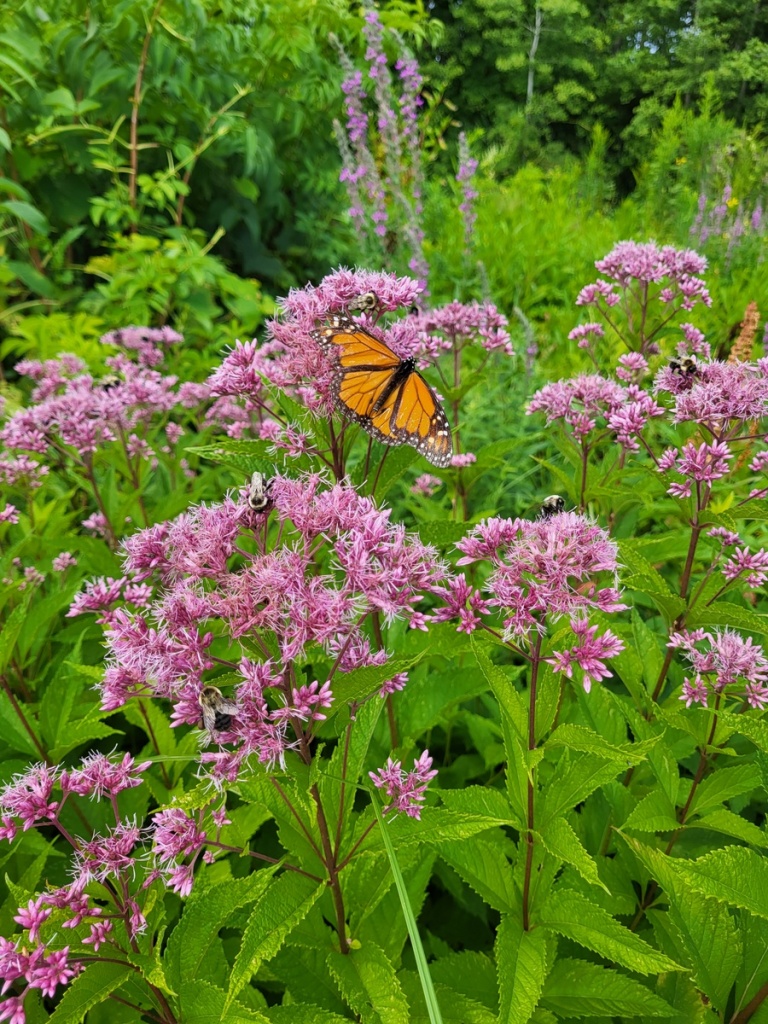
I didn’t see large numbers of monarch butterflies this year but I saw a few, and I found a patch of Joe Pye weed that they and spangled fritillary butterflies seem to prefer over all the other flowers in the area. I would revisit this spot every few days and each time these flowers had several butterflies and bumblebees visiting. You have to look closely to see them but there are many bumblebees in this shot.
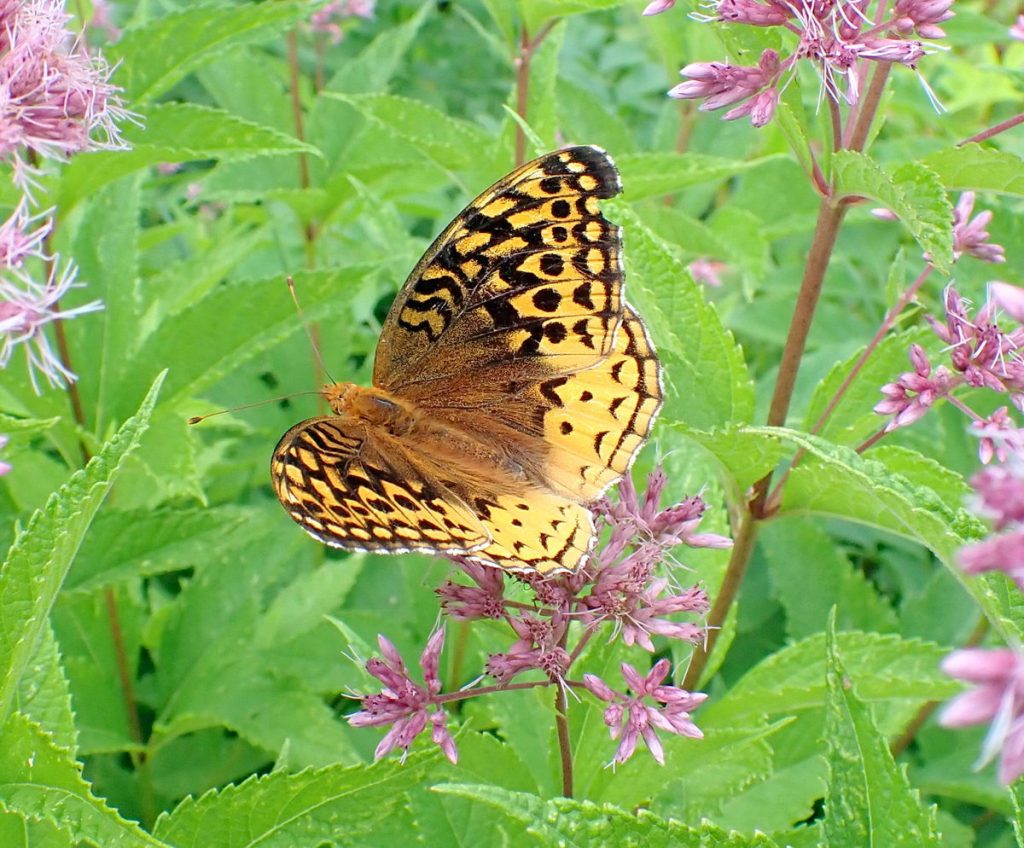
What was it, I’ve wondered, about these particular plants that made them so attractive to so many insects?
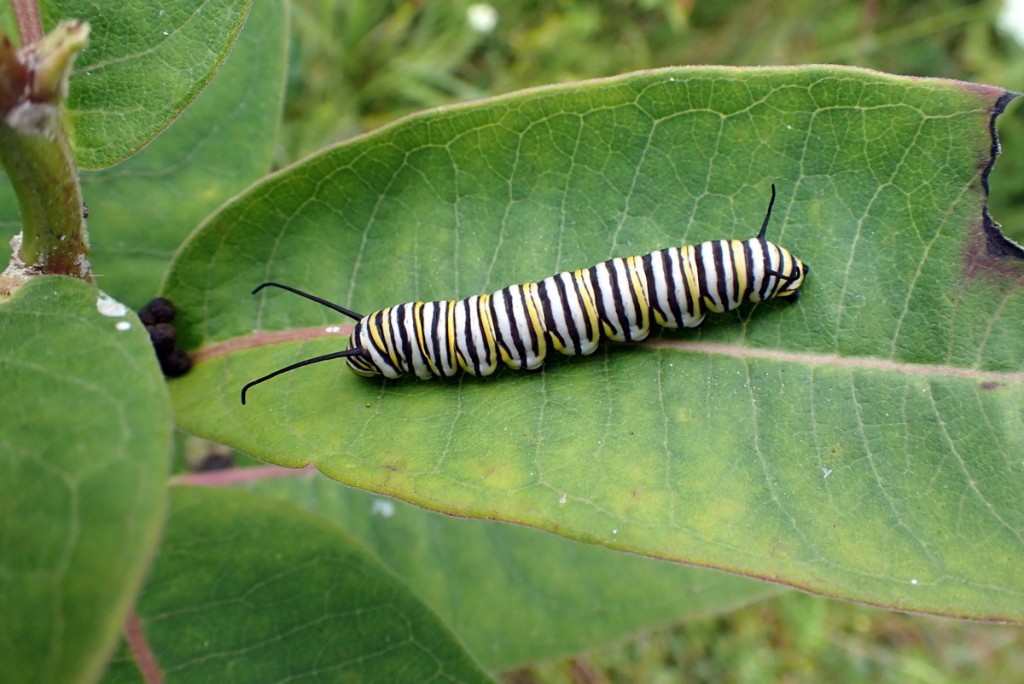
I also saw a monarch butterfly caterpillar on a milkweed plant last summer. I don’t see very many of them so it was a surprise.
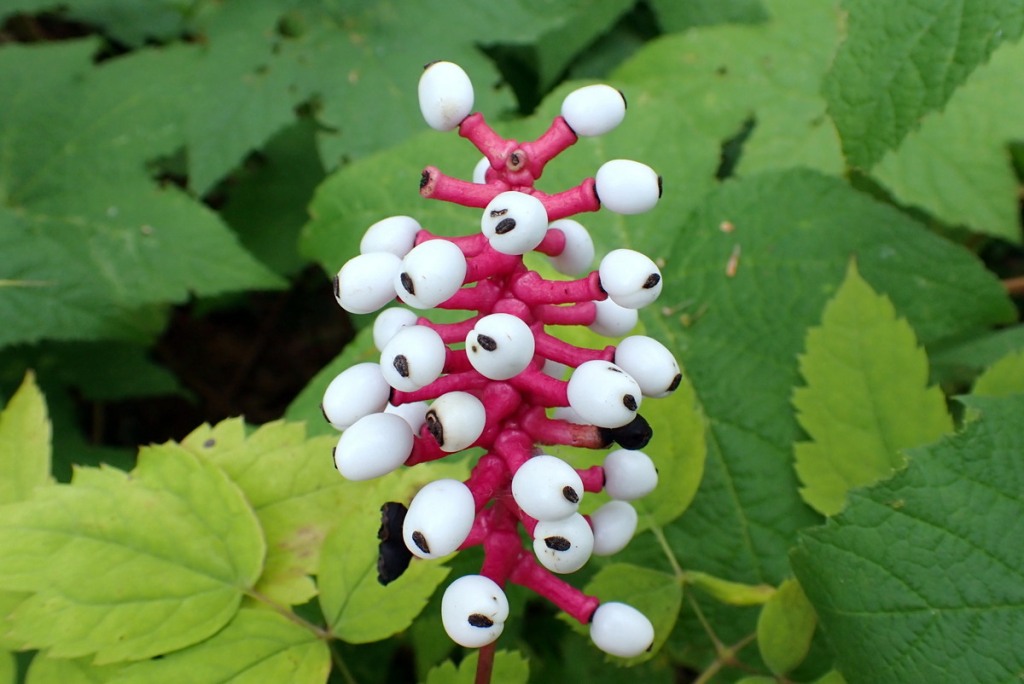
The unusual berries of the white baneberry plant (Actaea pachypoda) called doll’s eyes, have over the past two or three years turned black and shriveled up for reasons I can’t fathom, but last summer they were nearly pristine when I found them. The remains of the flower’s black stigma against the porcelain white fruit is striking, and I can’t think of another plant with fruit quite like these. The hot pink pedicels are pretty as well. These plants are toxic but luckily the berries are so bitter one bite would be enough to make anyone spit them out. Finding baneberry in the woods tells the story of rich, well drained loamy soil and a reliable source of moisture, because those are the things that it needs to grow. I almost always find them at the base of hillsides.
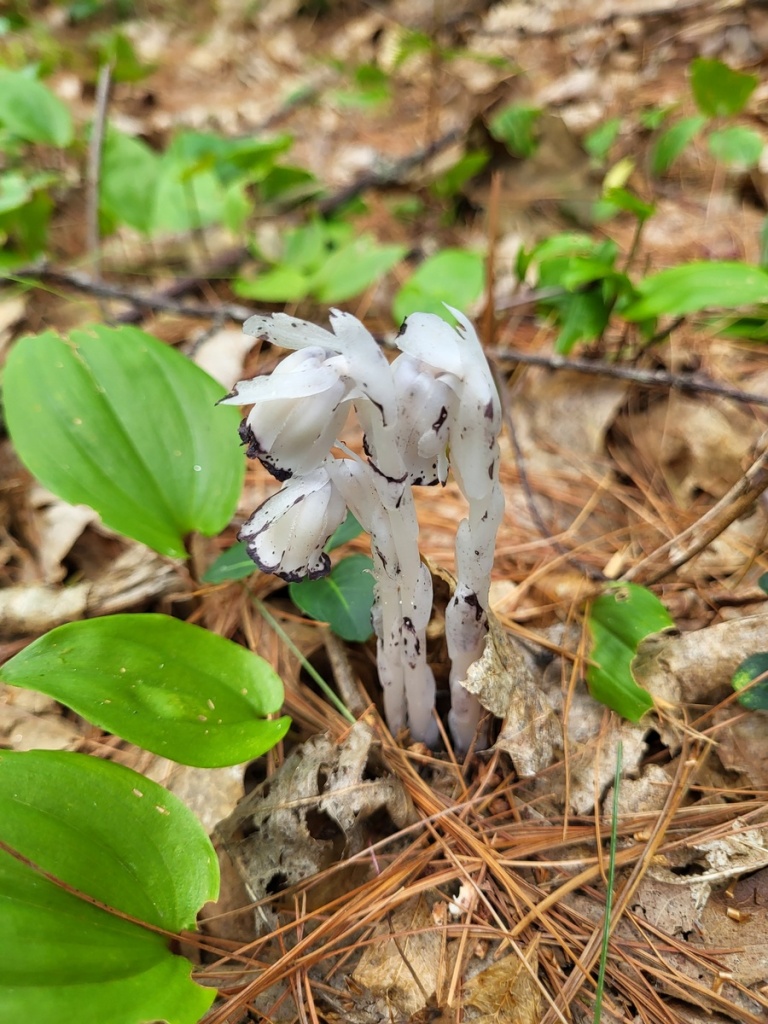
I saw very few mushrooms last summer because it was so dry, but I did see a few Indian pipes, which is odd since they’re parasitic on certain fungi.
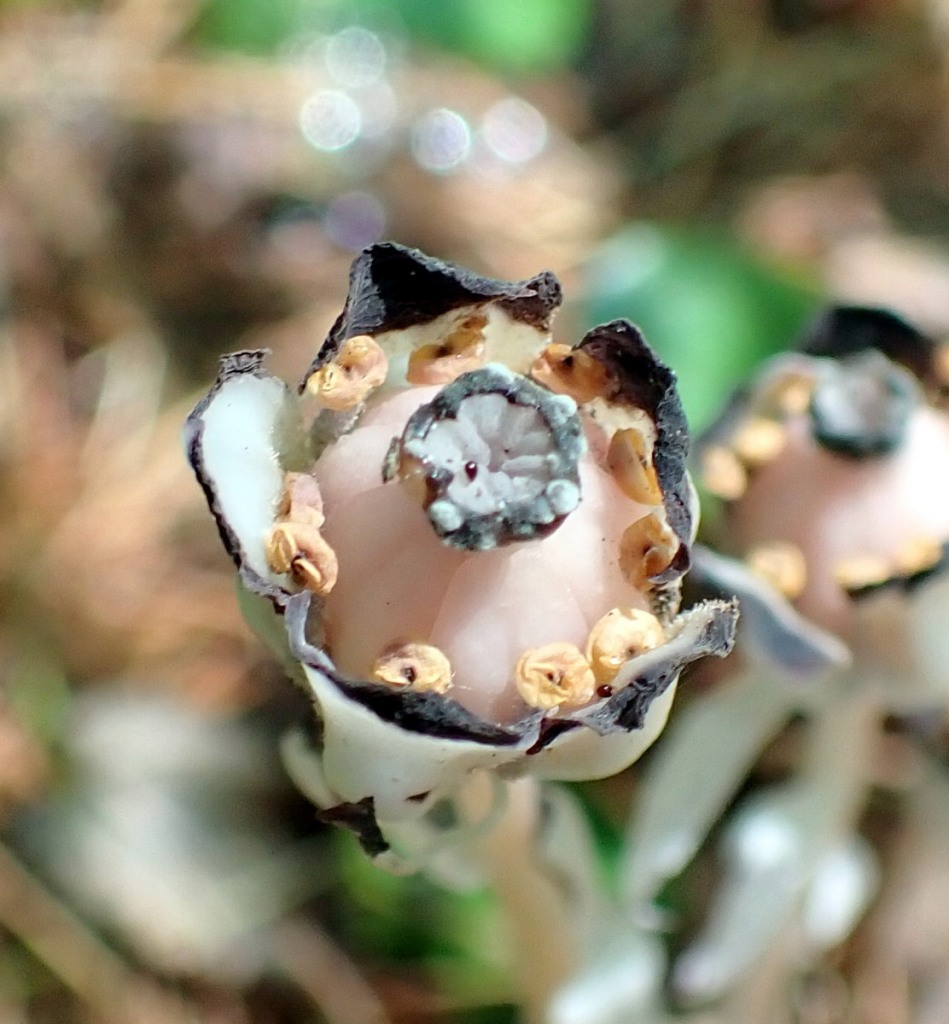
Here is a rarely seen (by many) look into the inside of an Indian pipe flower. At the tips of the 10 stamens surrounding the center stigma are the anthers, colored yellow, which contain pollen. The anthers are open and shedding pollen at this stage. In the center of the flower is the pollen-collecting stigma, which looks like a funnel between the yellowish stamens. Each flower will stand straight up when it is ready to be pollinated, and once pollinated will eventually become a hard brown seed capsule. You can find them sticking up out of the snow, usually in groups, at this time of year and they are always fun to look at.
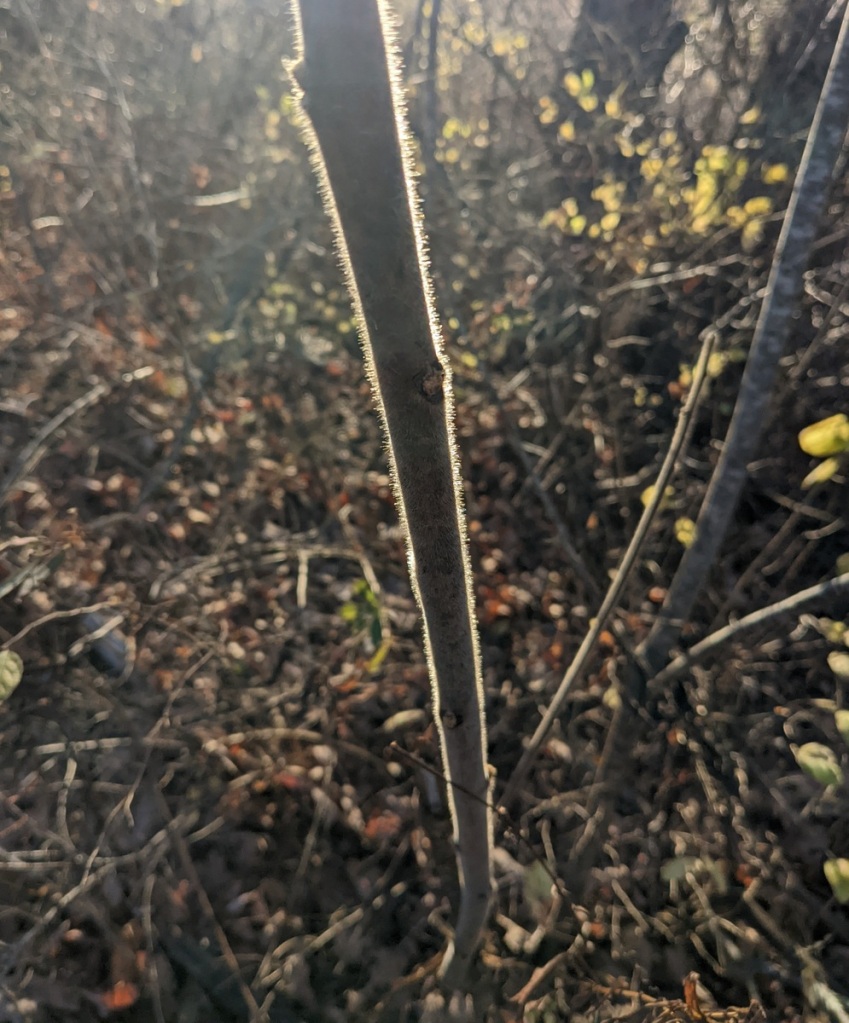
If you walk in certain places at certain times, you might see things that you will only see once in a great while, if at all. People often ask me how I do this; how I see what I see. The answer is to simply be there. I spend as much free time outdoors as possible. I also walk very slowly and pay close attention. Many times, I just stumble onto the greater part of what you see here on this blog. If I had been just a few minutes earlier or later I might have missed the sunlight highlighting the hairs on this staghorn sumac. That would have been too bad because it shows how the plant got its name, with its velvety softness just like that of a deer’s antler.
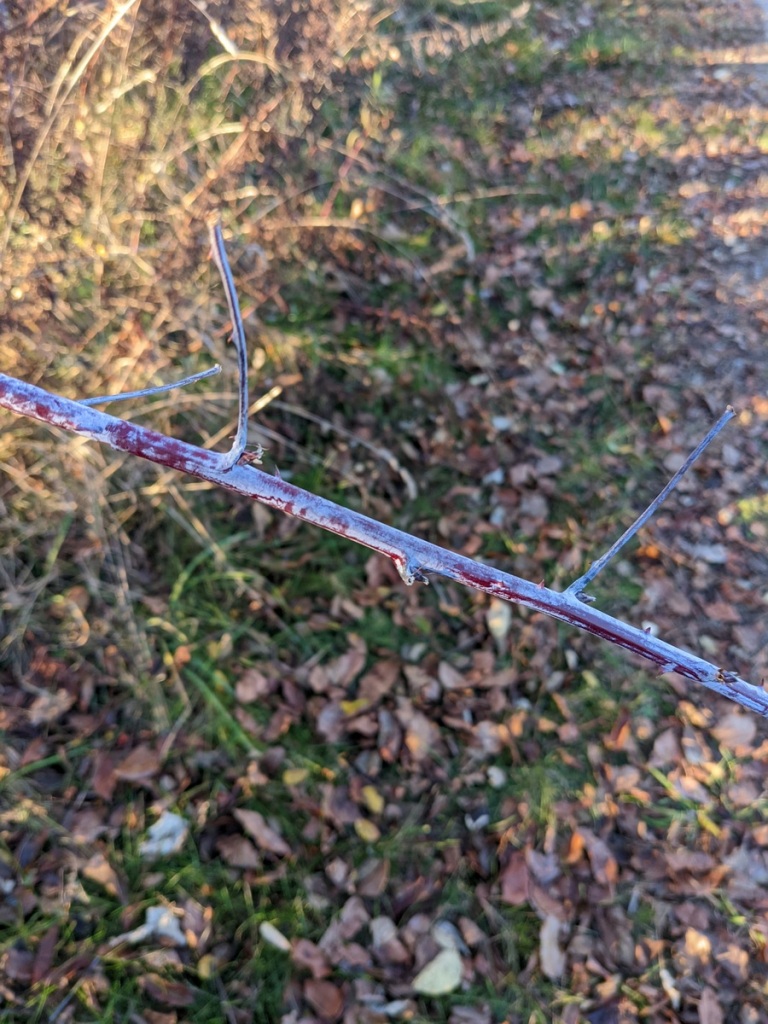
With other things found in nature, you can often do some planning ahead. For instance, if you know that the “bloom” on black raspberry canes is made of a kind of natural wax, and if you know that it “melts away” in warm summer weather, you know that your best chance of seeing it is in the cooler months. You will also find this same beautiful blue, which is a result of the way sunlight is reflected by the wax crystals, on blueberries, plums, lichens, and many other things.
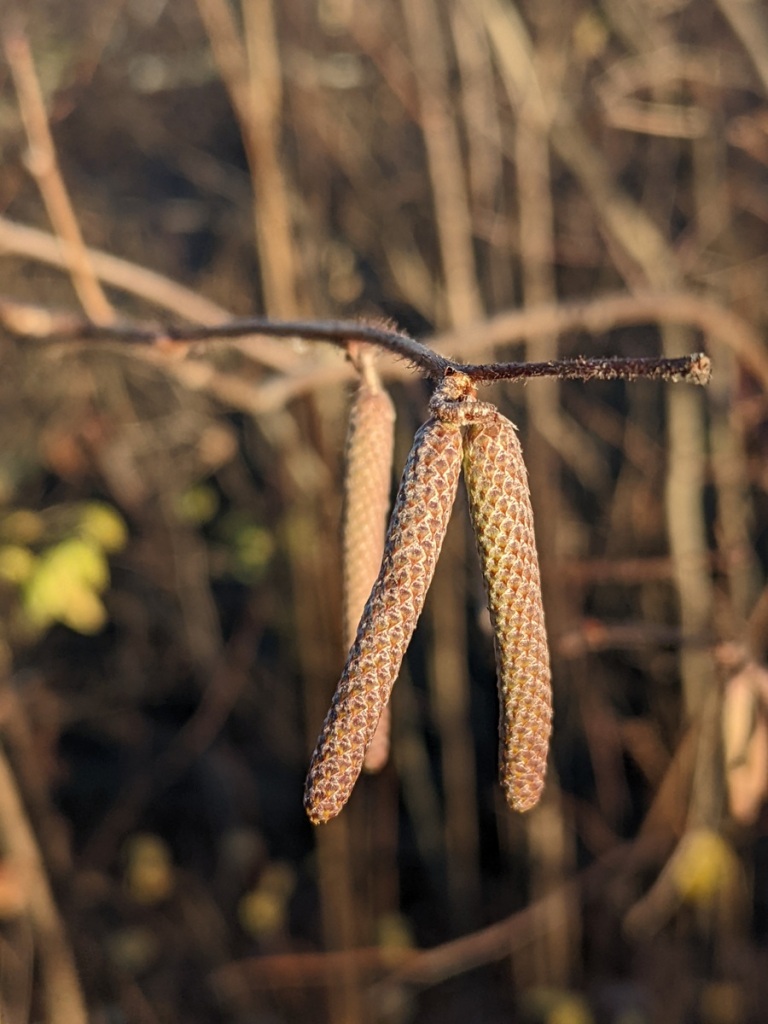
This photo of American hazelnut catkins might not seem like much but it is special to me because it was taken with a cell phone. Since I’ve struggled with getting a shot of these little things even with a macro camera in the past, I was pleasantly surprised to see that the phone camera got it. The depth of field could have been better but all in all I was happy with it. You can see how the triangular bud scales spiral up the catkin. When the catkin swells and the bud scales begin to open in spring the tiny, beautiful golden flowers will do the same. They are among the earliest spring flowers and I look forward to seeing them each year. It won’t be long now.
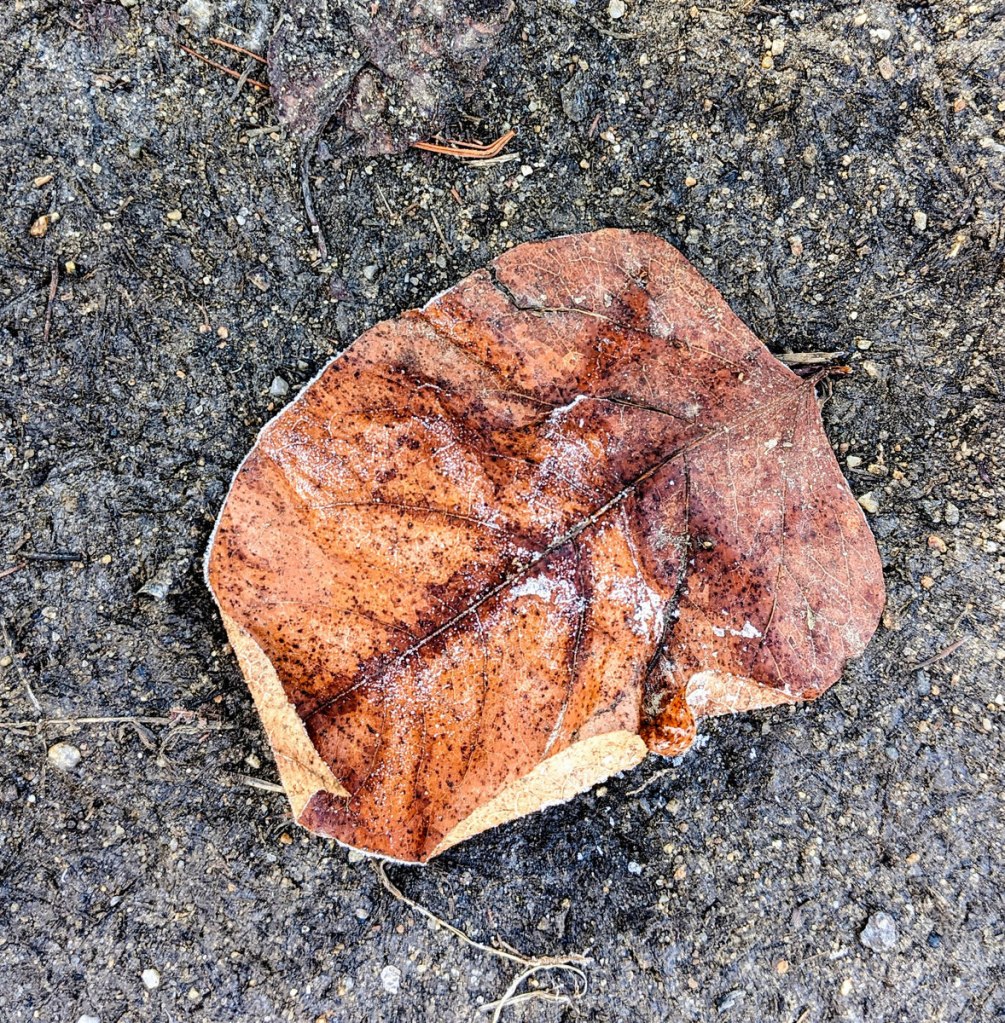
Many will most likely think big deal, it’s just an old leaf, but if you had lived through 60+ New Hampshire winters like I have you would know that any splotch of color is beautiful in the often stark black and white world of January. Any color anywhere will stop you in your tracks and you’ll be thankful that it was there for you to find.
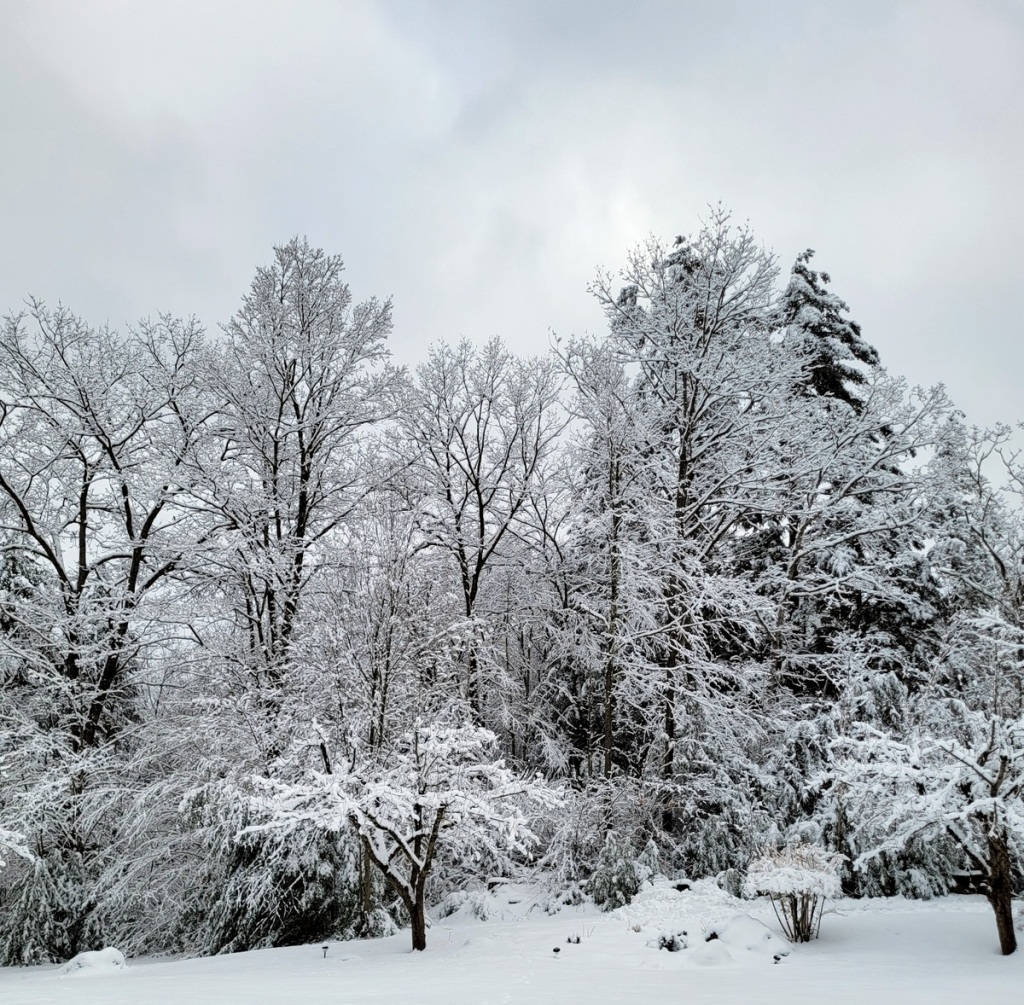
How does a child see the world? What is childlike wonder? Everything a young child sees is fresh and new; they’ve never seen it before so they have no history; no file cabinet full of memories to search through and compare what they see now to what they saw then. A child sees a branch or a rock and becomes enraptured by it because it is fresh and new. They see what is right now, as it is. We adults on the other hand, compare what we see to what we’ve seen before and instantly decide that it’s better or worse than the one we saw previously. Once we do that all the freshness, the newness, and the wonder is gone, and what we see becomes old. Children see as much with their hearts as with their eyes and if you follow their lead great beauty will appear, seemingly out of nowhere. The more beauty you see the more you will see, and before long you will have to say, as I did, “My gosh, everything is so very beautiful. Just look at it!”
If we have relegated vision solely to a function of the eyes, we are blind indeed.
~Craig D. Lounsbrough
Thanks for stopping in.





































































































































































































